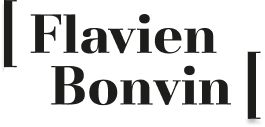Slow Software, a Sign of Appreciation for Developers
Developing software is a long and tedious process. It can be overwhelming for the team. That's why taking the time, and defining boundaries are critical.

Most people tend to agree that building software is not an easy task. Everybody understands the complexity of creating a fast and reliable application without grasping what's under the hood. This is normal, we all use technologies we don't understand, such as payment systems, cars or the food industry to name a few. Software is not an exception to this rule.
Like most intricate projects, many stakeholders are involved in the creation process, and a lot of time is required to get an idea from our minds into the final product. Software is somewhat different to other systems, it’s relatively easy to make it evolve overtime. It’s not like a factory where once build, it won't change or cost a tremendous amount of money to do so. It's a living product that can change shape during and after its development.
This difference opens a lot of possibilities and creates a lot of potential problems along the way. It's possible, for example to create robust processes and have new content delivered for the customer every day.
Constant Flow of Features
We all know and use free applications. Our browser is the best example. We use it to navigate the web and access a ton of information without paying for the ride. Other examples might include chat applications, social networks, or games. The amount of quality free applications is enormous, and some companies are even able to provide a constant flow of new features while proposing a free app.
The gaming industry changed its focus since the release of Fortnite (this might not be the turning point, but it definitely had a huge impact). Proposing a free game with a lot of content in the store is a viable business model adopted by many studios. Content isn’t only present in the store, it can be a limited-time object, game mode or map.
Social apps are also pretty good at delivering new content to their users. For example, photo filters are constantly added to apps to make sure that users keep going on your application.
Fast Software
There is no denying that access to free (free as in free beer) applications and software is critical for many. A lot of people rely on free tools to create, express themselves and consume content. The diversity of the web would be shattered if, for some reason, this access was altered. Everybody benefits from those apps, from the developer that uses quality libraries to the end-user who can enjoy content without having to pay.
Besides, it's nice to have a feature-packed application that keeps evolving. It helps to keep the people involved for a longer time and can help sustain a flow of cash. On top of that, this creates competition in the industry. It encourages companies to develop great application and content.
The Limits of the Fast Software
Not everything is rosy. Many social applications have practices that are seen as a violation of users privacy. If we make a parallel to the physical world, we quickly understand that there aren’t many companies that give away free stuff without expecting something in return. This also applies for software companies, but their retribution is less visible. Instead of leads or advertisements, they get data.
Privacy is not the only issue. This flow of features also encourages companies to copy one another. Every social network has something similar to stories (event twitter jumped in the bandwagon), and they all reportedly work on a Clubhouse-like feature. The innovation in the industry is often led by startups that experiment so that, finally, it is integrated by all the giants who lack inspiration and courage.
Moreover, the constant flow of new stuff to explore requires time and involvement. A user will be out of the loop if he skips an update or don’t use the service/game for some time. Understanding what changed can be overwhelming for some, resulting in users who might stop using the application.
The Rise of Slow Software
Slow Software is nothing new, it's a term I came up with that describes a company that takes the time to develop a product. Instead of focusing on the number of features, the team wants to create the most perfect product.

Instead of jumping on the last trend, those companies focus on their user satisfaction. Instead of having dozens of settings to tweak the application, they create a beautifully designed app that seems simple but hides a lot of complexity.
That the first defining factor of a Slow Software company. They have a vision and stick to it over time. They don't want to please everybody (which is impossible) but rather find a niche and create a product that match their requirements.
Those services aren’t free, at least not totally. Having a subscription-based model ensure a recurring and predictable flow of money. Not everyone adheres to the subscriptions but they are critical to create Slow Software. Nobody will say that a paid subscription for a magazine is dumb, the same apply for a software. Besides, a regular flow of cash helps the team allocate resources and plan ahead. It helps them improve the product. That's something that is common for B2B and starts to get more traction in the B2C universe.
Besides, the applications following this model often have fewer features but much more involved users. Having more time in between updates forces the users to get familiar with the application. This will result in a strong community around the project. They’ll end up sharing tips, feature ideas or bugs, they’ll also welcome newcomer and help get master of the app.
Lastly, to keep users involved and interested in the product, the company must have excellent communication channels. It can be a blog that gives tips, a subreddit where a community manager interact with people or a newsletter letting the users know where the product is headed.
The four cornerstones are then: vision, subscription, community, and communication. Being able to get all four of those isn't a guarantee that you're doing Slow Software right but is nevertheless a great indicator.
Subscribe to the newsletter to get new articles right in your inbox!
Subscribe to the newsletterWhere It Falls Short
It would be an oversimplification to say that Slow Software is the solution and that there aren't any limits or drawbacks. Firstly, the cost, not everybody can afford yet another subscription, and managing them can get pretty hairy. Apple and Google can make efforts in that regards with better ways to display your current subscriptions and the total cost per year for all of them. Until an effort made by the giants companies must justify the cost of their subscription and show that the price is worth.
The community and communication are interdependent and essential for the success of Slow Software. That's why keeping a high code quality and avoiding as many scandals as possible is critical. Losing the trust of your customer might sign the end of the project. Since users often pay for the service, they'll also have some expectations. Shady privacy policy or changes to it could be poorly received and result in a backlash. Guaranteeing great service overtime is hard but mandatory to ensure prosperity.
Future of Slow Software
I don't see Slow Software disappear in the near future. People tend to appreciate great applications, and having to pay for a service is getting more common. Besides, privacy-related questions are becoming more important than ever, and having services that respect user's privacy are welcome. In my opinion, we are at the beginning of a significant change in the public's approach to software. Of course, they will still be free and feature-packed applications. It's just a matter of time to see TikTok replaced by another application that takes a simple concept and turns it into a billion-dollar idea.
However, I see the Slow Software playing along with those applications and taking more and more space in people's phones or tabs.
One trend that might benefit the Slow Software is digital minimalism, an extension of the minimalism in the digital world. Some people, myself included, don't like the constant flow of information happening in applications. Having 100 apps on the phone and only using 10% of them is a waste of space and the digital minimalist wants to cut the number of apps down to the bare minimum. In my opinion, Slow Software can appeal to this demographic. Selling well-developed applications that aren't bloated with many useless features is what digital minimalists might be looking for. That's what I'm looking for.
Social networks such as Reddit can help a company grow its user base and find the right niche. In my opinion, Reddit is the best place for a Slow Software company. Its "non-social" approach to the social network is what makes it unique. It’s very content-centric where other platforms might be product or ego-centric. This makes huge differences when communicating with customers and is beneficial when done right.
There is one pitfall that needs to be addressed: accessibility. I said that to succeed, a Slow Software company must rely on a predictable and recurring source of income. That's why subscription business models are the right ones. However, not everybody is able to afford a new subscription. On top of that, subscriptions often have a unique price across the globe, making them too expensive for many people. Matt D'Avella, a popular productivity YouTube addressed this issue with the "Universal Pricing Program" for its online course. The principle is simple, the price change depending on the location of the customer. It allows better inclusion and a fairer price for everybody. Even tho the concept is not perfect (someone could use a VPN to pay less), it shows that solutions exist.
In the end, Slow Software isn't something new. I see it as a step back to times before smartphones. Because software used to be developed following a model that was somewhat similar to the concept I presented in this article. Updates weren't as frequent, and having to pay for a license was the norm. In that regard, Slow Software is similar.
One significant difference is the community that's built around service. Social networks are relatively new (in regard to the whole IT industry), and they are the driving power of Slow Software.
Slow Software is a way to show appreciation for work put into an application. It's a way to encourage developers to take the time required to build features. It's a way to promote sustainable software companies.
